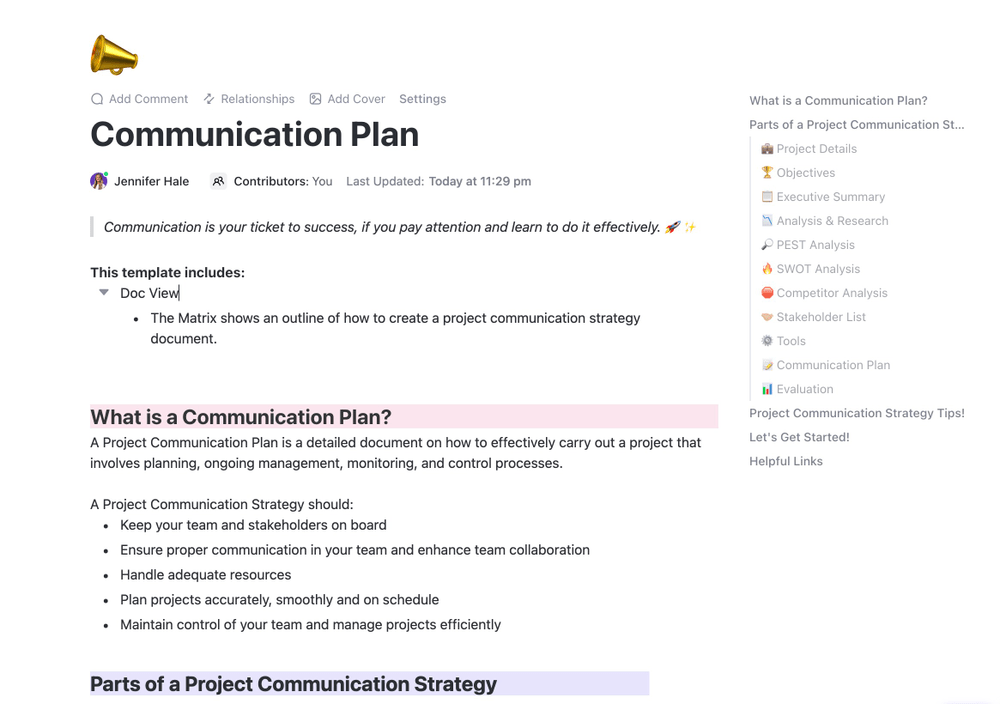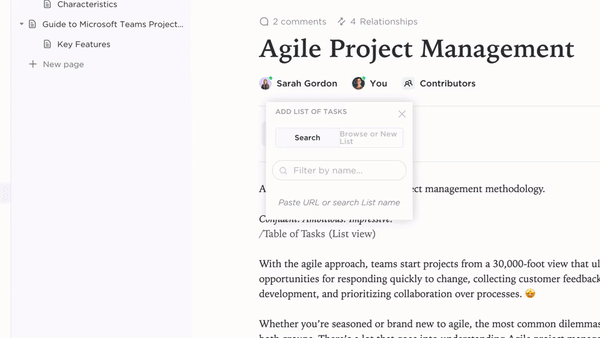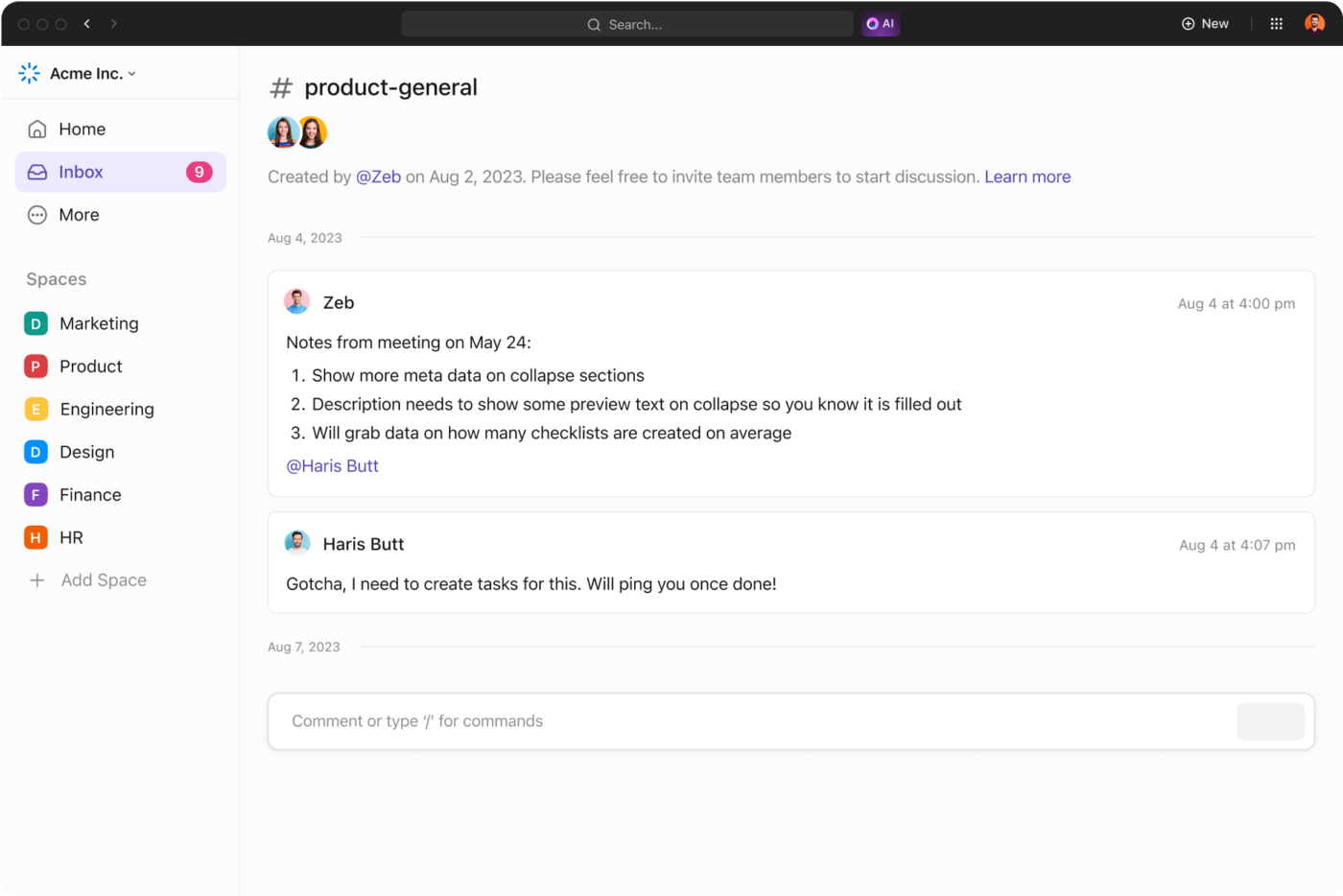

Introducing new products and services and diversifying your portfolio is a crucial part of any successful business strategy. It allows you to seize new market opportunities, stay ahead of the competition, and drive sales and growth. ⏩
But you can’t just toss any product that comes to mind into the mix. You must first carefully evaluate your goals, market conditions, competitive environment, and the performance of existing products and services.
This is where a sound product portfolio management strategy becomes indispensable. It ensures that your entire offering always aligns with what your customers want while staying true to your brand identity and broader business objectives.
Not sure how to properly manage your product portfolio? We’ve got your back with some handy tips to help you nail this process. Plus, we’ll throw in a couple of tools and features to supercharge your product portfolio and set yourself up for lasting success!
What Is Product Portfolio Management?
Product portfolio management (PPM) entails planning, developing, and managing your entire line of products or services. It ensures that your offerings perform optimally and align with your objectives and customer demands at any moment.
As opposed to product management, which covers a single product, product portfolio management is concerned with the entire lifecycle of all your products, from ideation and product development to launch, improvement, and eventual retirement or replacement.
Benefits of Having a Product Portfolio Management Strategy
Implementing and maintaining an effective product portfolio strategy provides numerous advantages. Here are the most notable ones:
- Optimal resource utilization: Regularly reviewing and fine-tuning products to match market trends and demands can help businesses allocate budget, time, and talent meaningfully
- Risk mitigation: Product portfolio management lets you identify and stay on top of factors that can affect the performance of your existing products and, consequently, your bottom line
- Facilitates innovation: Product portfolio management helps businesses stay ahead of the curve by identifying market gaps and adapting to new market trends and demands
- Customer satisfaction: Increases customer retention and conversion by helping businesses meet customer demand and cater to diverse customer segments
- Improved financial performance: Optimizing investments by focusing on products with the highest potential for growth can increase revenue streams
Best Practices for Successful Product Portfolio Management
Product portfolio management is no walk in the park, but with the right approach, you can ensure that every product in your offering contributes to your company’s strategic objectives.
Check out our seven battle-tested tips and techniques for making informed decisions about your product portfolio, optimizing resource allocation, and boosting your overall profitability. 💫
1. Define your business goals
The first—and arguably the most important—step in creating any strategy is setting the goals and objectives you aim to achieve.
For product portfolio management, this means clearly outlining your overall business goals and how your products can support them. This may include setting revenue targets, developing market plans, or comparing your performance against industry benchmarks.
By setting clear goals, you ensure that each product contributes meaningfully to your organization’s overarching mission and vision and that your product portfolio management strategies are optimized to achieve them. If your products aren’t contributing, it’s time to consider modifying or replacing them.
If you don’t want to go through this process from scratch, the ClickUp SMART Goals Template can help you set practical goals and track their progress to completion.

2. Create a product roadmap
Like a map guiding you on your journey, a well-crafted product roadmap directs your product to its destination with pathways, planned detours, and clear objectives. 🗺️
A roadmap provides an overview of the vision and direction of a product and its evolution over a period of time. Ultimately, it ensures that your product remains on the right track by coordinating your efforts and facilitating balanced decision-making.
Tracking each product’s lifecycle helps you allocate resources at every stage of the journey and adjust product portfolio management strategies accordingly. You want to ensure your products are well-equipped to reach their goals, adapt to changing circumstances, and sail smoothly through any storm.
The ClickUp Product Roadmap Template helps you visualize your product development lifecycle and track your progress as you complete tasks.

3. Establish a review schedule
The product portfolio management process should be dynamic, responsive, and resilient, able to adapt to market changes on the fly.
To enable this, establish a review schedule that helps keep your products in check, ensuring they align with your overall goals and market demands.
The review process should involve assessing your products’ current performance and identifying new opportunities for growth and success.
Regular reviews also facilitate coordinated team collaboration efforts in product development and lead to more efficient solutions.
4. Communicate and collaborate
By fostering a collaborative environment with effective communication strategies, your team can work toward achieving set product goals and respond swiftly to emerging issues or challenges.
Besides internal, open lines of client communication are also essential for optimizing product portfolio management strategies. They ensure that your products and services are in sync with the demands and needs of end users and other stakeholders.
To improve your internal and external communications, try the ClickUp Communication Plan Template.

5. Let data be your guide
Analyzing and understanding the performance metrics of individual products helps you identify major performers and optimize them for better outcomes. This lets you adapt to changing market dynamics, ensuring your products stay relevant and competitive. Some of the best frameworks for conducting this kind of analysis include the SWOT analysis, BCG matrix, and the McKinsey matrix.
On the other hand, analyzing competitor data lets you position your products more effectively and identify areas for improvement. This gives you a competitive edge and helps you stay ahead of the game.
Finally, through a cost-benefit analysis of each product, you can evaluate profit and returns, enabling you to allocate resources more purposefully. 💷
6. Prepare for risk
In a generally uncertain business world, one thing is sure—risks are bound to arise at some point. This can include changing market conditions, new competitors springing up, or economic downturns.
However, by taking a proactive approach to dealing with these risks, you can better navigate the uncertainties and mitigate their potential impact on the performance of your product portfolio.
In essence, product portfolio management aims to identify risk indicators and assess their potential effect. It’s also essential to prioritize risks based on the likelihood of occurrence to determine those that require immediate attention and those that can be managed for extended periods.
Considering the above, developing risk mitigation strategies and contingency plans is crucial. You should assign responsibilities and timelines for executing them to ensure they are implemented effectively.
Lastly, regularly reviewing risk mitigation strategies against changing business conditions and market shifts ensures they remain relevant and well-positioned to tackle new risks.
Need an effective way to implement these risk mitigation strategies? Try the ClickUp Risk Management Risk Register Template and stay ahead of the curve!
7. Implementing feedback and adjustment strategies
Product portfolio management is a cyclical process of developing strategies, implementing roadmaps, incorporating feedback, and back again. ♻️
To ensure that your products meet customer needs and align with the organization’s goals, it is vital to establish functioning feedback mechanisms. This could be customer surveys and reviews for evaluating the performance of individual products.
Leveraging user feedback can help you gain valuable insights and make adjustments based on potential impacts and alignments with specified goals. This enables you to maintain a competitive edge and ensure that your product portfolio remains relevant and thriving in the long run.
If you want an effective way to stay on top of customers’ opinions and sentiments about your products, the ClickUp Product Feedback Survey is the way to go. Use the collected insights to make appropriate changes to your product portfolio, whether introducing new products or retiring existing ones.

Top Tools for Effective Product Portfolio Management
Managing a diverse range of products can be complex and challenging. In addition to mastering all the tips and tricks, having the appropriate tools in your toolkit is essential to streamline the process.
In this section, we’ll introduce you to ClickUp, a first-class product management and productivity platform that has all the tools you need to bring your product portfolio management game to an entirely new level! 🔝
1. Product management software
Product management software solutions offer a centralized platform for overseeing the entire portfolio management process, automating workflows, and improving efficiency and productivity.
These tools are ideal for promoting collaboration and facilitating product roadmapping and strategic planning—all you need to manage your product portfolio effectively.
ClickUp is a perfect example of a well-designed product management tool, offering a robust set of features to assist you in setting goals and seeing them through your entire product development lifecycle.
The platform has a hierarchical structure that helps you customize and organize products and product lines efficiently. From Workspaces down to Lists and subtasks, these flexible structures help you manage complex product-related tasks easily.
The ClickUp Portfolios feature allows you to create and manage multiple product tasks simultaneously. You can also track the progress and status of each task in real time and prioritize assignments easily. Customizing your product portfolio with color codes and filters allows you to categorize each product based on its status or priority level.

Furthermore, with ClickUp Custom Fields, you can customize task fields and attribute them with relevant product details, such as market type, market segment, etc. You can also use ClickUp Tags to categorize tasks based on priority level or product types, making it easier to filter through specific aspects of the product portfolio.
2. Collaboration and communication tools
Product portfolio management requires constant collaboration between cross-functional teams to achieve set goals and deliver on product strategies. Furthermore, streamlined communication facilitates decision-making by keeping everyone involved aligned with product objectives.
This is where tools like ClickUp Whiteboards come into play. They provide an infinite virtual canvas for collaborative ideation, product planning, and problem-solving. Whether it’s brainstorming ideas for a product’s direction or synergizing to carry out joint tasks, ClickUp Whiteboards has your back.
In addition to their real-time collaboration features, Whiteboards allow you to move swiftly from ideation to action by assigning tasks, setting deadlines, and tracking progress directly within the tool.

Collaborate on various product documents like roadmaps and requirements with ClickUp Docs, the platform’s text editor and document management system. It can serve as the single source of truth for your company’s product portfolio management efforts.
Add links and images, tag team members, leave comments, and connect the Docs to your product workflows to keep everyone on the same page.

ClickUp Chat view is another valuable feature that allows team members to communicate via text in threaded conversations, making it easy to partake in multiple discussions.
You can use mentions to bring specific team members into the conversation. And with tags, you can assign and categorize comments and tasks for easier organization and tracking.

3. Customer relationship management (CRM) tools
Customer sentiment plays a big part in product portfolio management. Strategic decisions about which products to develop, market, and retire are geared toward meeting customer needs and demands. Therefore, you need a tool that can help you keep track of how customers interact with your company products and services.
ClickUp CRM and ClickUp Sales provide a set of features for managing essential aspects of your product portfolio, including sales data, customer feedback, and product performance metrics. They allow insights into customer buying behavior and preferences, which can inform product development and marketing strategies.
4. Analytics and reporting tools
Analytics and reporting tools allow you to gain insights into product performance, track progress, and make informed decisions about your product portfolio that align with your goals.
ClickUp offers various reporting features to help you stay on top of product performance and see how it impacts your goals and objectives. With ClickUp Dashboards, you can measure, track, and visualize performance through key performance indicators (KPIs) and up to 50 customizable cards. Use the Dashboards to get a high-level overview of how your resources are allocated toward different products and identify bottlenecks and areas for improvement in your product portfolio management workflows.

Make Product Portfolio Management a Breeze with ClickUp
Product portfolio management is an iterative process that demands continuous product lifecycle tracking, strategy reviews, and team collaboration. A well-managed product portfolio is flexible, data-driven, and customer-focused.
A trusted solution for achieving all of that? ClickUp!
ClickUp offers an all-in-one platform for managing your diverse product offerings, synergizing your team for success, and guiding your product journeys every step of the way. Sign up today and revolutionize your product portfolio management! 😍


Questions? Comments? Visit our Help Center for support.